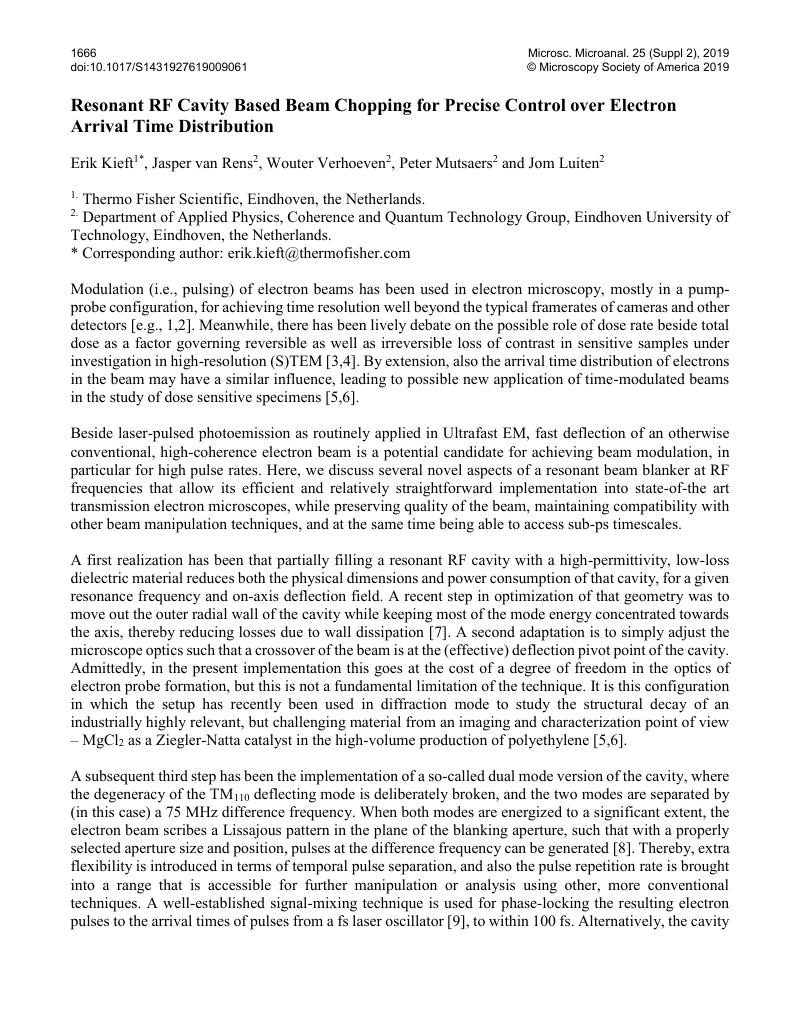No CrossRef data available.
Article contents
Resonant RF Cavity Based Beam Chopping for Precise Control over Electron Arrival Time Distribution
Published online by Cambridge University Press: 05 August 2019
Abstract
An abstract is not available for this content so a preview has been provided. As you have access to this content, a full PDF is available via the ‘Save PDF’ action button.

- Type
- Revealing the Fundamental Structure of Soft and Hard Matter by Minimizing Beam-Sample Interactions
- Information
- Copyright
- Copyright © Microscopy Society of America 2019
References
[10]This work is part of an Industrial Partnership Programme of the Netherlands Organisation for Scientific Research (NWO). The authors would like to thank E.H. Rietman, I. Koole, H.A. van Doorn, and A.H. Kemper for their invaluable technical support.Google Scholar


